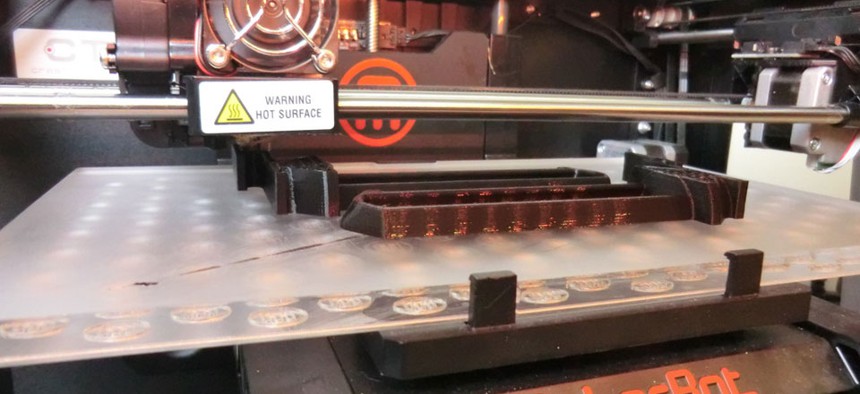3-D Printing Will Explode in 2014, Thanks to the Expiration of Key Patents

Flickr user creative_tools
A huge drop in prices is predicted for some devices.
Here’s what’s holding back 3D printing, the technology that’s supposed to revolutionize manufacturing and countless other industries: patents. In February 2014, key patents that currently prevent competition in the market for the most advanced and functional 3D printers will expire, says Duann Scott, design evangelist at 3D printing company Shapeways.
These patents cover a technology known as “laser sintering,” the lowest-cost 3D printing technology. Because of its high resolution in all three dimensions, laser sintering can produce goods that can be sold as finished products.
Whenever someone talks about 3D printing revolutionizing manufacturing, they’re talking about the kinds of goods produced by, for example, the industrial-grade 3D printing machines used by Shapeways. The company used by countless industrial designers, artists and entrepreneurs who can’t afford their own 3D laser sintering printers, which can cost tens of thousands of dollars each.
Once the key patents on 3D printing via laser sintering expire, we could see huge drop in the price of these devices, says Scott. This isn’t just idle speculation; when the key patents expired on a more primitive form of 3D printing, known as fused deposition modeling, the result was an explosion of open-source FDM printers that eventually led to iconic home and hobbyist 3D printer manufacturer Makerbot. And Makerbot was recently acquired by 3D printing giant Stratasys for about $400 million in stock, plus a potential $200 million stock bonus. That acquisition was a homecoming of sorts for Makerbot; Stratasys was founded by Charles Hull, who invented 3D printing via FDM, the very technology on which Makerbot was based.
Read the full story at Quartz.
(Image via Flickr user creative_tools)





